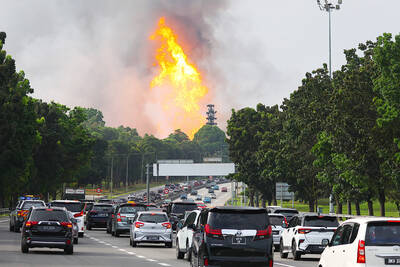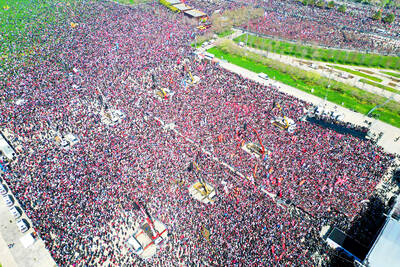The Pentagon is pushing for the passage of legislation aimed at boosting the US’ domestic semiconductor industry, telling lawmakers the components, which go into everything from vacuum cleaners to fighter jets, are needed for the war in Ukraine.
“The national security stakes for passing the Chips Act are high,” US Deputy Secretary of Defense Kathleen Hicks said in a statement to Bloomberg News. “Microelectronics are fundamental to virtually every current and legacy military system.”
Hicks said the production of Javelin and Stinger missiles — “systems desperately needed by those in Ukraine” — are hampered by persistent semiconductor manufacturing delays and that having access to on-shore manufactured chips would help the US deter its adversaries and better assist its partners and allies. A Javelin missile system has about 200 chips.
The US’ share of semiconductor manufacturing has fallen to 12 percent from 37 percent since 1990, and the country produces none of the most advanced chips, which are made largely in Taiwan.
The US Senate is considering a package of legislation that would funnel US$52 billion in grants and subsidies to US semiconductor manufacturers, as well as funding to 5G wireless networks. It would provide US$3 billion for research.
The bill contains a 25 percent tax credit for semiconductor manufacturing — the source of a projected US$79 billion revenue loss.
“This is a national security issue for us,” said US Senator Mark Kelly, a former fighter pilot and astronaut, following a recent briefing on Capitol Hill with Hicks, US Director of National Intelligence Avril Haines and US Secretary of Commerce Gina Raimondo. “We need to get this bill done.”
“The next generation of technologies is bound up in our ability to make sure that we have a secure and resilient supply chain, and it means getting the kind of structures in place to get the most sophisticated kinds of chips to the United States,” Hicks said.

A fire caused by a burst gas pipe yesterday spread to several homes and sent a fireball soaring into the sky outside Malaysia’s largest city, injuring more than 100 people. The towering inferno near a gas station in Putra Heights outside Kuala Lumpur was visible for kilometers and lasted for several hours. It happened during a public holiday as Muslims, who are the majority in Malaysia, celebrate the second day of Eid al-Fitr. National oil company Petronas said the fire started at one of its gas pipelines at 8:10am and the affected pipeline was later isolated. Disaster management officials said shutting the

US Vice President J.D. Vance on Friday accused Denmark of not having done enough to protect Greenland, when he visited the strategically placed and resource-rich Danish territory coveted by US President Donald Trump. Vance made his comment during a trip to the Pituffik Space Base in northwestern Greenland, a visit viewed by Copenhagen and Nuuk as a provocation. “Our message to Denmark is very simple: You have not done a good job by the people of Greenland,” Vance told a news conference. “You have under-invested in the people of Greenland, and you have under-invested in the security architecture of this

Japan unveiled a plan on Thursday to evacuate around 120,000 residents and tourists from its southern islets near Taiwan within six days in the event of an “emergency”. The plan was put together as “the security situation surrounding our nation grows severe” and with an “emergency” in mind, the government’s crisis management office said. Exactly what that emergency might be was left unspecified in the plan but it envisages the evacuation of around 120,000 people in five Japanese islets close to Taiwan. China claims Taiwan as part of its territory and has stepped up military pressure in recent years, including

UNREST: The authorities in Turkey arrested 13 Turkish journalists in five days, deported a BBC correspondent and on Thursday arrested a reporter from Sweden Waving flags and chanting slogans, many hundreds of thousands of anti-government demonstrators on Saturday rallied in Istanbul, Turkey, in defence of democracy after the arrest of Istanbul Mayor Ekrem Imamoglu which sparked Turkey’s worst street unrest in more than a decade. Under a cloudless blue sky, vast crowds gathered in Maltepe on the Asian side of Turkey’s biggest city on the eve of the Eid al-Fitr celebration which started yesterday, marking the end of Ramadan. Ozgur Ozel, chairman of the main opposition Republican People’s Party (CHP), which organized the rally, said there were 2.2 million people in the crowd, but